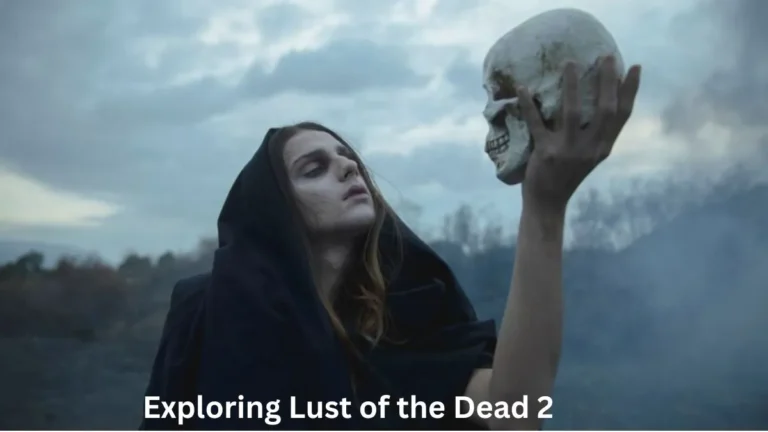The world of cinema offers various genres, each with its own appeal, but few are as polarizing as exploitation films. “Lust of the Dead 2,” a Japanese zombie exploitation film, falls into this niche category. Despite its controversial themes and graphic content, it has garnered a dedicated following. This article delves into the film’s themes, production, and cultural impact, providing a comprehensive understanding of its place in the cult film landscape.
The Controversial Premise
“Lust of the Dead 2” continues the storyline introduced in its predecessor, blending horror and exploitation elements. The film is set in a dystopian future where a virus has turned men into sex-crazed zombies. These infected men seek out women, driven by an insatiable lust, turning the narrative into a chilling battle for survival. The premise is undeniably controversial, pushing the boundaries of what is typically acceptable in mainstream cinema. However, this very controversy has contributed to its cult status, attracting viewers who are drawn to its shock value.
Production and Direction
The film was directed by Naoyuki Tomomatsu, a filmmaker known for his work in the pink film genre, which often explores erotic and violent themes. Tomomatsu’s direction in “Lust of the Dead 2” reflects his signature style—unapologetically graphic yet darkly humorous. The low-budget production values are evident, but they add a certain charm, characteristic of many cult films. The special effects, while far from Hollywood standards, contribute to the film’s raw and gritty atmosphere.
Themes of Survival and Morality
At its core, “Lust of the Dead 2” explores themes of survival in a world where societal norms have collapsed. The female characters, who are the primary focus, must navigate a world where danger lurks at every corner. The film raises questions about morality and human nature when pushed to the brink. Despite its explicit content, these underlying themes offer a deeper commentary on the human condition. The film’s portrayal of women as both victims and survivors adds complexity to the narrative, challenging traditional gender roles often seen in horror films.
Cultural Impact and Reception
The reception of Lust of the Dead 2 has been polarizing, with critics and audiences divided on its merit. Some view it as a grotesque exploitation of violence and sexuality, while others see it as a satirical commentary on societal fears. In Japan, where the film was produced, it received limited attention, catering primarily to fans of the genre. However, internationally, it has found a niche audience among cult film enthusiasts. Its shock value and unapologetic approach to taboo subjects have earned it a place in discussions about the boundaries of cinema.
Comparisons to Other Cult Films
“Lust of the Dead 2” shares similarities with other exploitation films that have achieved cult status. Films like “I Spit on Your Grave” and “Cannibal Holocaust” also blend horror with controversial themes, challenging viewers’ perceptions. These films, like “Lust of the Dead 2,” are often criticized for their graphic content but are also lauded for pushing the envelope. The comparison highlights the film’s place within the broader context of exploitation cinema, where shock and awe are as integral as plot and character development.
Audience Appeal and Cult Status
The appeal of “Lust of the Dead 2” lies in its ability to provoke a strong reaction. For some, it is a form of escapism, allowing them to experience something outside the norm. For others, it is the thrill of watching something taboo that draws them in. The film’s cult status is cemented by its ability to elicit these reactions consistently. Fans of the film often appreciate it for its boldness and willingness to tackle subjects that mainstream cinema shies away from. This underground appeal is a hallmark of cult films, which thrive on the fringes of popular culture.
Legacy and Future Influence
While “Lust of the Dead 2” may not have achieved mainstream success, its legacy within the cult film community is undeniable. It has inspired discussions about the role of exploitation films in society and the ways in which they challenge conventional storytelling. The film’s influence can be seen in other low-budget horror films that push boundaries, both in terms of content and production. As long as there is an audience for controversial and provocative cinema, films like “Lust of the Dead 2” will continue to be relevant.
Conclusion
“Lust of the Dead 2” is more than just a controversial exploitation film; it is a reflection of societal fears and the human condition. Its graphic content and controversial themes may not be for everyone, but they have secured its place in the pantheon of cult films. By pushing the boundaries of what is acceptable in cinema, it challenges viewers to confront their own perceptions of morality and survival. For those willing to dive into the world of exploitation cinema, “Lust of the Dead 2” offers a thought-provoking and unforgettable experience.

